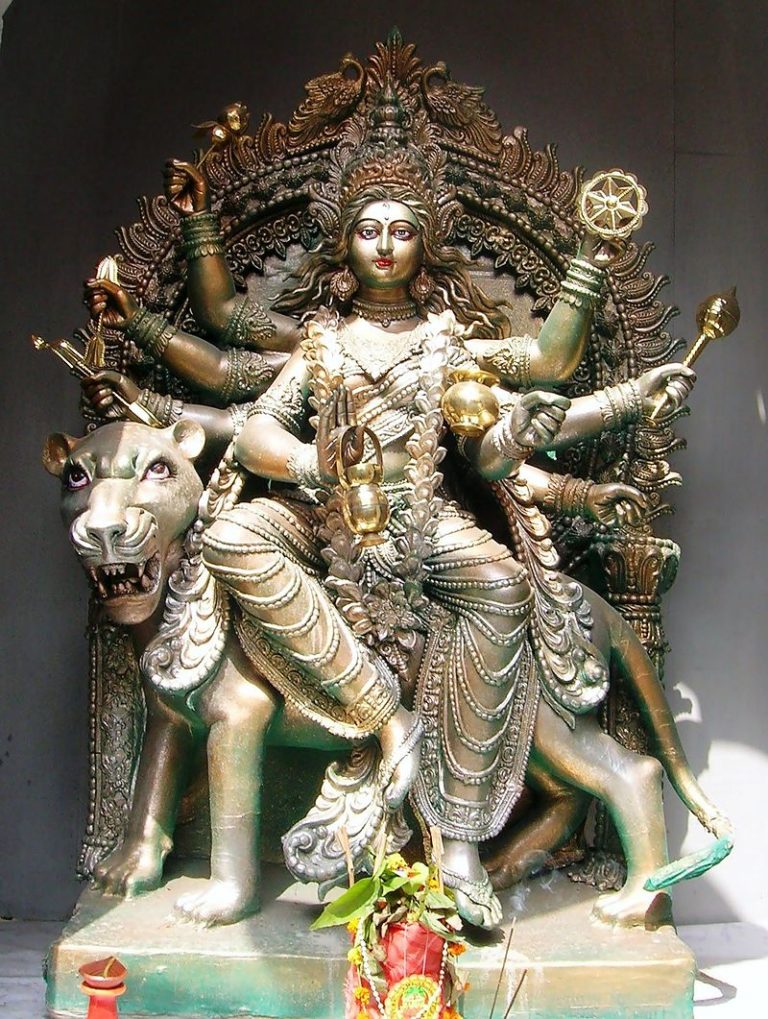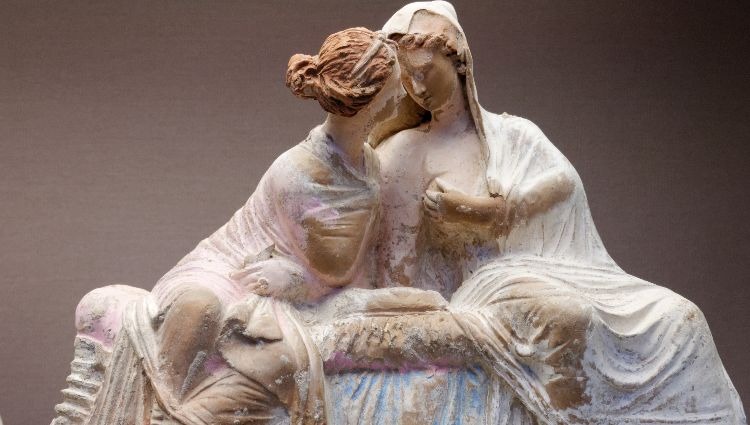
Arthur Avalon brought Tantra to the west. That is, westerners knew Tantra existed, but it was classified as a degenerate form of Hinduism involving black magick rituals and sex. The majestic Arthur Avalon books changed all that. They presented Tantra as a legitimate spiritual pursuit and established the whole field of Tantric studies in the western academy. That’s a tremendous accomplishment.
So who was Arthur Avalon?
For a century we’ve thought this was a pseudonym for John Woodroffe. The real story is a lot more interesting. Arthur Avalon is a pseudonym that protected an entire colony of Tantric adepts, both European and Indian, working in Calcutta at the turn of the century.
Let’s start with the most visible member. Who was John Woodroffe?
The Judge
Sir John George Woodroffe was a judge, politically active, a patron of the arts, and Catholic.
He was born in Calcutta in 1865 into a British Catholic family. He followed his father into the colonial judicial system and was eventually appointed chief justice. He married the concert pianist Ellen Elizabeth Grimson, and the couple was active in the vibrant cultural scene that mixed upper class British and Indian Brahman society. She was a Theosophist and the couple ran in that social circle too, hosting Annie Besant when she visited town. Woodroffe openly supported Indian self-rule, an unusually radical position for a high-ranking member of the judiciary. When he retired in 1915 the couple moved to England where they both recommitted to the Catholic faith. Woodroffe died in 1933.
If John Woodroffe was born and died Catholic, what was his involvement with Tantra?
I was touring College Street in Kolkata (Calcutta) when my guide turned to me and said “Did you know John Woodroffe was a Tantric initiate?” I said “No!” People in the magical communities sometimes assume he was but it hadn’t been documented.
Like me, Kathleen Taylor learned about Woodroffe’s initiation on the streets of Kolkata. She was doing research for her dissertation. When she was picking a doctoral topic she discovered that no biography had been written about him and set about to remedy this. Her book Sir John Woodroffe, Tantra and Bengal: “An Indian Soul in a European Body?” delves into the context of his work.
The Collaborator
Taylor was the first biographer to document Woodroffe’s Indian collaborators. She primarily focused on his lifelong colleague Atilal Bihari Ghose.
Ghose came from a Shakta (Goddess-centered) Indian family and received an English education. Woodroffe and Ghose met through their work in the Calcutta judiciary. Where Woodroffe served on the High Court, Ghose practiced law at the Court of Small Causes, one of the Indian clerks who made up the lower rungs of the colonial hierarchy.
Taylor tracked down Ghose’s life history. Reading the Ghose family correspondence, interviewing the descendants of Ghose and Woodroffe, and collecting oral history held in the judicial community, Taylor pieced together evidence for a circle of Indian and European Tantric practitioners in early twentieth century Kolkata.
Ghose provided much of the material for the Arthur Avalon books. Some of these are translations of Tantric texts from Sanskrit into English. Woodroffe himself was still just learning Sanskrit at the end of his life and relied on Ghose and other colleagues to provide the translations.
Ghose was also motivated to preserve the insights of his Tantric teacher. The Arthur Avalon book Principles of the Tantra Shasta was actually a translation of his teacher’s major work Tantrattatva.
The Teacher
Woodroffe and Ghose belonged to a circle of initiates around the Tantric saint Shivachandra Bhattacharya Vidyarnava. He was a Kaula, a practitioner of the left-hand path which includes sexual ritual. He was active politically and led groups which opposed western influences on Bengal.
Despite his anti-western stance he had friends who were interested in western science and philosophy. He initiated John and Ellen Woodroffe together, and he supported the Arthur Avalon project, allowing his Tantrattatva to be translated into English.
In this book Vidyarnava made a case for Tantra as a legitimate form of Hindu religion. He taught that Tantric practice was superior to western science and philosophy since it was proven by actual experience. He also noted that Tantra was a secret practice and required initiation by a guru.
When Vidyarnava died Ghose took over his circle of students. This group continued to meet at houses Ghose maintained in Calcutta and farther out of town in Ranchi. Several photographs capture Ghose with Woodroffe and other men, including one in which Woodroffe wore the robe of a Bramacharya or student. That photograph, along with Woodroffe’s support for Indian independence, eventually caused his rejection by Calcutta’s polite British society.
The Collective
Ghose was Woodroffe’s closest collaborator, but the two of them did not work alone. They had other close colleagues who made substantial contributions.
The Arthur Avalon project was actually part of a larger movement. Bengali Tantrics had been educating western audiences about their Tantric perspective for decades before the Arthur Avalon books. Some of them joined the Theosophical Society and leveraged their membership to challenge the appropriation of their religious ideas and speak to westerners on their own behalf directly.
The Elder
One of these was a man named Baradakanta Majumdar, also a student of Vidyarnava. He provided the first translation of a Tantric text in English in 1880 in The Theosophist in his two-part article “A Glimpse of Tantrik Occultism”. Decades later he joined the Avalon project and wrote the introduction to Principles of the Tantra Shasta which translated the work of his teacher.
The Friend
Another student of Vidyarnava became a close friend of Woodroffe and his second closest collaborator. Pramathanath Mukhopadhyay received a colonial education, then became an Indian nationalist, a regular theme in the collective. He was a teacher and writer in his own right. He taught that ancient Hindu teachings were confirmed by western science. He was particularly interested in mantra, the recitation of Sanskrit chants. He passed on his teacher’s insight that Tantric practice embraced living in the material world as the means toward a spiritual goal.
The Figurehead
To sum up, the Arthur Avalon books include translations of Sanskrit texts provided by Sanskrit scholars, translations of Tantric texts written by Tantric teachers, and insights into practice provided by South Asian practitioners. They were the collaborative work of a close-knit collective.
So why do the books bear Woodroffe’s name? Why are we only learning about this now?
Kathleen Taylor explains that “Arthur Avalon” was a pseudonym, but it was not intended to protect Woodroffe. It was to protect Ghose and the other contributors.
Woodroffe’s Tantric colleagues chose him as the face of the collective so their work would be taken seriously in the colonial world. They had the knowledge, Woodroffe had the respectability to present it. Western scholars before Woodroffe had labeled Tantra as disreputable, dangerous and not worthy of study. It was only when a prominent Englishman produced these serious works that Tantra entered the world stage as an ancient and profound spiritual practice.
So now we have a bit of soul searching to do. Why were we so willing to believe that a westerner who had just started studying Sanskrit could have translated so many texts? Why would we think that a British Catholic judge could provide the sophisticated perspective of an adept embedded in Indian culture and devoted to the Hindu religious tradition?
If we pointed to orientalist racism and western exceptionalism we wouldn’t be wrong. As a point of honor, as a matter of reparations, to set the record straight we need to acknowledge this. We are also obligated to immediately incorporate this knowledge into our conversations and relinquish the convenience of using “John Woodroffe” as shorthand for Arthur Avalon. Global religious studies has developed the phrase “the Avalon project” to describe the collective.
That’s a good start, but our soul-searching can go deeper than that. The west values intellect. We think we can understand something by reading about it. That’s me, I’ve read something every day for my entire adult life, and I write essays like this to pass on what I learn. Tantra insists that insight only comes through practice. Simply knowing the topic isn’t enough. We need to embody the teachings.
As western intellectuals explore the world to learn about it we also have a rather Ferengi-like tendency toward possessiveness. We like to acquire things and then use them to build something else. Theosophy is all about repurposing Indian spirituality, and there’s quite a bit of that in Thelema too. Kurt Leland’s book The Rainbow Body explores the ways the New Age appropriated ideas about the chakras in some detail. That’s also me, I sometimes learn a Tantric idea and think “I could use that!” It’s a tendency I confront in myself as part of my own Tantric practice.
In short, westerners accepted John Woodroffe as Arthur Avalon because he was a westerner like us. The collective made a good choice and it actually worked: we listened to them through him.
Global religious studies offer us the opportunity to do better. We can offer South Asian practitioners respect on their own terms. Also, we can read their writings directly instead of relying on second-hand pass-through from western esotericists and academics.
The Real John Woodroffe
John Woodroffe introduced Tantra to the west as a venerable and sophisticated religious tradition. For decades we admired his command of Sanskrit and his depth of insight. However global religious studies has brought us a re-evaluation of his contribution to the Avalon project. Now we know that the command of Sanskrit and the depth of insight belonged to his Bengali teachers and colleagues.
The image of Woodroffe as a solitary genius played to the colonial narrative of intellectually superior westerners. We’ve lost that Woodroffe, but we’ve gained a more nuanced and realistic image that is equally admirable and better suited for our times.
Woodroffe was born into the colonial ruling class and held a high office. He used his position to support India’s political independence and Bengali art. When he felt a call to study Tantra he joined a circle of students even at the expense of his reputation. In the Avalon project he dedicated his prestige and position to bring credibility to the work. He offers a role model for how to respectfully collaborate cross-culturally, how to contribute within a group, and how to use whatever power we have to benefit the community.
Further Reading
Kathleen Taylor. Sir John Woodroffe, Tantra and Bengal. Routledge, 2012.
Atal Bihari Ghose is the unseen presence behind Arthur Avalon.
Baradakanta Majumdar. A Glimpse of Tantrik Occultism and A Glimpse of Tantrik Occultism continued. The Theosophist, 1880.
…clairvoyance of the mind was known to the ancients many thousand years ago. During their trance state (samadhi), the Yogis, by means of inner vision, could see the mysterious agencies of nature underlying the universe.
Julian Strube. Global Tantra, Religion, Science and Nationalism in Colonial Modernity. Oxford University Press, 2022.
…the Avalon project was the outcome of a longer development that started before Woodroffe arrived in Calcutta; the pivotal moment in the emergence of “global Tantra” can be traced to the year 1880, when learned Bengalis began to articulate their understanding of Tantra to an English-speaking audience.
Moritz, Maria. Globalizing “Sacred Knowledge”: South Asians and the Theosophical Society, 1879-1930. Constructor University, 2017.
[In the Theosophical Society] South Asians were potentially awarded the prestigious position not only as interlocutors in an interreligious dialogue, as mediators between different cultures or as “brothers” in the utopian project, but as teachers of European members. The Theosophical Society thus provided them with the promising opportunity to affirm their authority and challenge, even invert, the colonial order.



